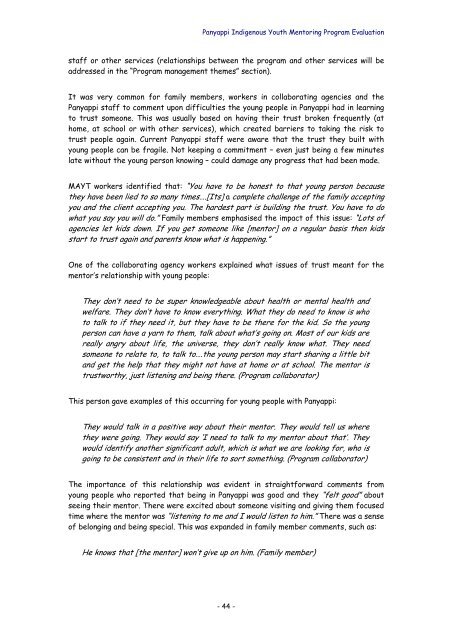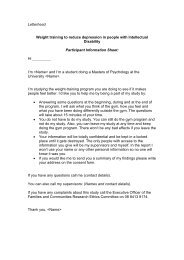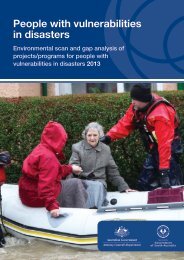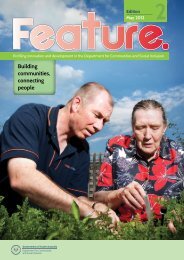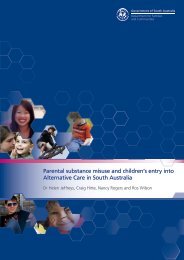Panyappi Indigenous Youth Mentoring Program Evaluation
Panyappi Indigenous Youth Mentoring Program Evaluation
Panyappi Indigenous Youth Mentoring Program Evaluation
Create successful ePaper yourself
Turn your PDF publications into a flip-book with our unique Google optimized e-Paper software.
<strong>Panyappi</strong> <strong>Indigenous</strong> <strong>Youth</strong> <strong>Mentoring</strong> <strong>Program</strong> <strong>Evaluation</strong><br />
staff or other services (relationships between the program and other services will be<br />
addressed in the “<strong>Program</strong> management themes” section).<br />
It was very common for family members, workers in collaborating agencies and the<br />
<strong>Panyappi</strong> staff to comment upon difficulties the young people in <strong>Panyappi</strong> had in learning<br />
to trust someone. This was usually based on having their trust broken frequently (at<br />
home, at school or with other services), which created barriers to taking the risk to<br />
trust people again. Current <strong>Panyappi</strong> staff were aware that the trust they built with<br />
young people can be fragile. Not keeping a commitment – even just being a few minutes<br />
late without the young person knowing – could damage any progress that had been made.<br />
MAYT workers identified that: “You have to be honest to that young person because<br />
they have been lied to so many times….[Its] a complete challenge of the family accepting<br />
you and the client accepting you. The hardest part is building the trust. You have to do<br />
what you say you will do.” Family members emphasised the impact of this issue: “Lots of<br />
agencies let kids down. If you get someone like [mentor] on a regular basis then kids<br />
start to trust again and parents know what is happening.”<br />
One of the collaborating agency workers explained what issues of trust meant for the<br />
mentor’s relationship with young people:<br />
They don’t need to be super knowledgeable about health or mental health and<br />
welfare. They don’t have to know everything. What they do need to know is who<br />
to talk to if they need i t,<br />
but they have to be there for the kid. So the young<br />
person can have a yarn to them, talk abou t what’s going on. Most of our kids are<br />
really angry about life, the universe, they don’t really know what. They need<br />
someone to relate to, to talk to….the young person may start sharing a little bit<br />
and get the help that they might not have at home or at school. The mentor is<br />
trustworthy, just listening and being there. (<strong>Program</strong> collaborator)<br />
This person gave examples of this occurring for young people with <strong>Panyappi</strong>:<br />
They would talk in a positive way about their mentor. They would tell us where<br />
they were goi ng. They would say ‘I need to tal k to my mentor about that’. They<br />
would identify another significant adult, which is what we are looking for, who is<br />
going to be consistent and in their life to sort something. (<strong>Program</strong> collaborator)<br />
The importance of this relationship was evident in straightforward comments from<br />
young people who reported that being in <strong>Panyappi</strong> was good and they “felt good” about<br />
seeing their mentor. There were excited about someone visiting and giving them focused<br />
time where the mentor was “listening to me and I would listen to him.” There was a sense<br />
of belonging and being special. This was expanded in family member comments, such as:<br />
He knows that [the mentor] won’t give up on him. (Family member)<br />
- 44 -


